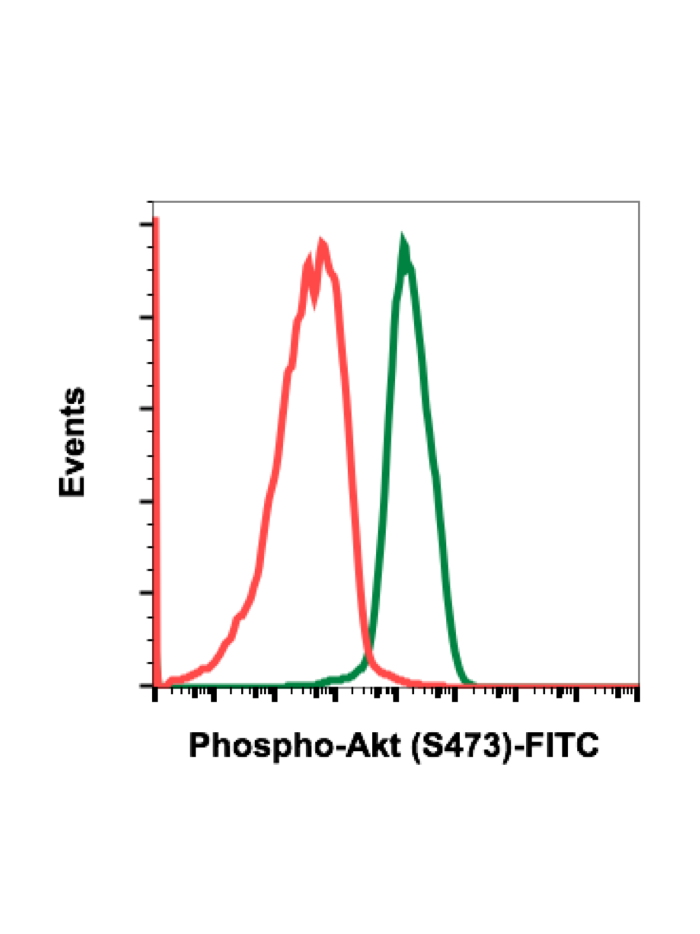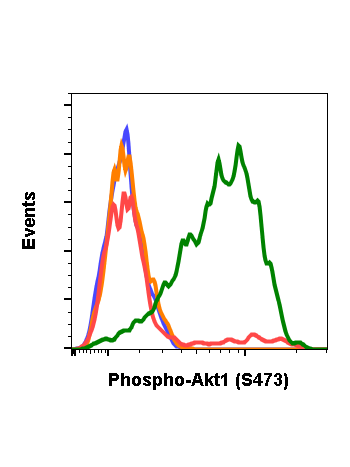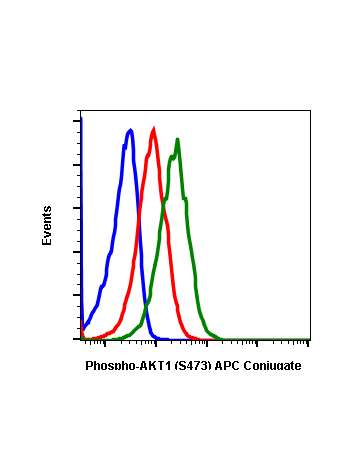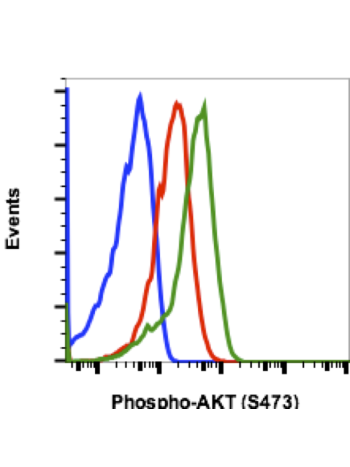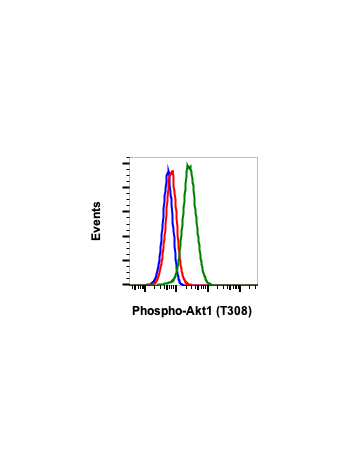Phospho-Akt1 (Ser473) (C7) rabbit mAb FITC conjugate
From
$118.80
In stock
Only %1 left
SKU
1133
Akt also known as PKB (Protein kinase B) or RAC-PK (Related to the A and C kinases) is a serine/threonine kinases that contains a pleckstrin homology (PH) domain. This protein kinase is activated by insulin and various growth and survival factors to function in a wortmannin sensitive pathway involving PI3 kinase. Akt is activated by phospholipid binding and activation loop phosphorylation at Thr308 by PDK1 and by phosphorylation within the carboxy terminus at Ser473. Phospho-Akt promotes cell survival by inhibiting apoptosis. Specifically, phospho-Akt1 has been shown to phosphorylate Bad, a member of the Bcl-2 family that promotes cell death. This phosphorylation results in the inactivation of the proapoptotic function of Bad. The Akt/phospho Akt molecule is thus considered to link extracellular survival signals (growth factors) with the apoptotic machinery (BAD). Akt is also a key mediator of the metabolic effects of insulin. Additionally, phospho Akt has been referred to as an oncogene because it has increased activity in a number of tumors. This antibody recognizes phospho Akt phosphorylated at Ser473. This phosphorylation site is shared by all three isoforms of phospho Akt. The homologous phosphorylation sites in Akt2 and Akt3 are S474 and S472, respectively.
| Applications | Flow Cytometry |
|---|---|
| Clone | AktS473-C7 |
| Format | FITC |
| Validated Reactivity | Human, Mouse |
| Cross Reactivity | Predicted to work with mouse, rat and other homologues. |
| Clonality | Monoclonal |
| Immunogen | A synthetic phospho-peptide corresponding to residues surrounding Ser473 of human phospho Akt1 |
| Formulation | 1X PBS, 0.09% NaN3, 0.2% BSA |
| Isotype | Rabbit IgGk |
| Preparation | Protein A+G |
| Recommended Usage | For flow cytometric staining, the suggested use of this reagent is 5 µL per million cells or 5 µL per 100 µL of staining volume. It is recommended that the reagent be titrated for optimal performance for each application. |
| Storage | 2-8ºC |
| Pseudonyms | RAC-alpha serine/threonine-protein kinase, Protein kinase B, PKB |
| Uniprot ID | P31749 |
| References | 1. Franke TF, et al. (1997) Cell 88: 435-7. 2. Burgering, B.M. and Coffer, P.J. (1995) Nature 376: 599-602. 3.Franke TF, et al. (1995) Cell 81: 727-36. 4. Alessi DR, et al. (1996) EMBO J 15: 6541-51. 5. Sarbassov DD, et al. (2005) Science 307: 1098-101. 6. Jacinto E, et al. (2006) Cell 127: 125-37. 7. Cardone MH, et al. (1998) Science 282: 1318-21. 8. Brunet A, et al. (1999) Cell 96: 857-68. 9. Zimmermann S and Moelling K, (1999) Science 286: 1741-4. 10. Cantley LC and Neel BG (1999) Proc Natl Acad Sci USA 96: 4240-5. 11. Vlahos CJ, et al. (1994) J Biol Chem 269: 5241-8. 12. Hajduch E, et al. (2001) FEBS Lett 492: 199-203. 13. Cross DA, et al. (1995) Nature 378: 785-9. 14. Diehl JA, et al. (1998) Genes Dev 12: 3499-511. 15. Gesbert F, et al. (2000) J Biol Chem 275: 39223-30. 16. Zhou BP, et al. (2001) Nat Cell Biol 3: 245-52. 17. Navé BT, et al. (1999) Biochem J 344: 427-31. 18. Inoki K, et al. (2002) Nat Cell Biol 4: 648-57. 19. Manning BD, et al. (2002) Mol Cell 10: 151-62. |
Write Your Own Review

